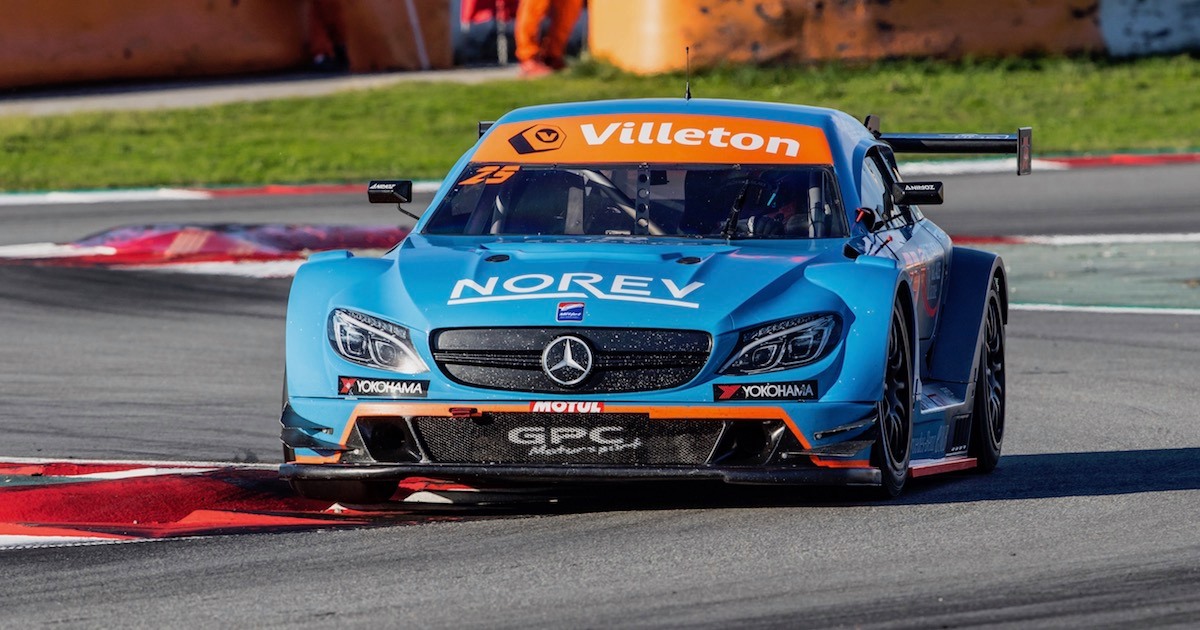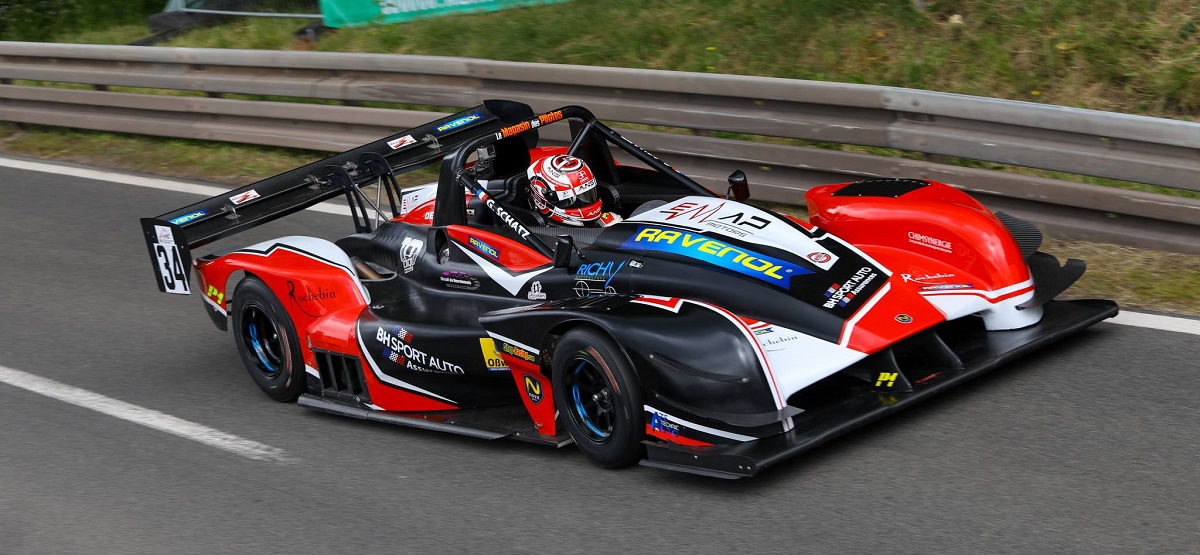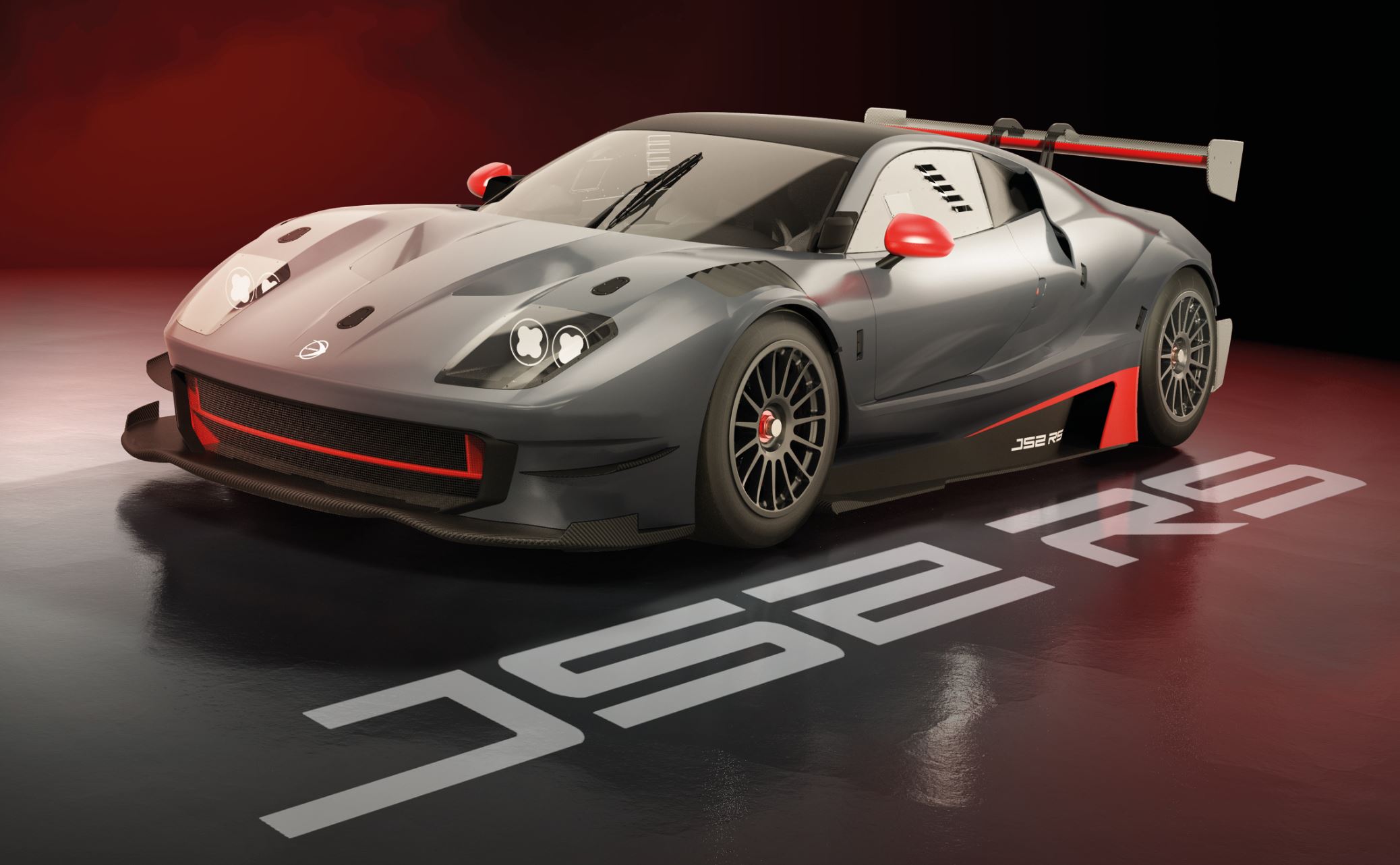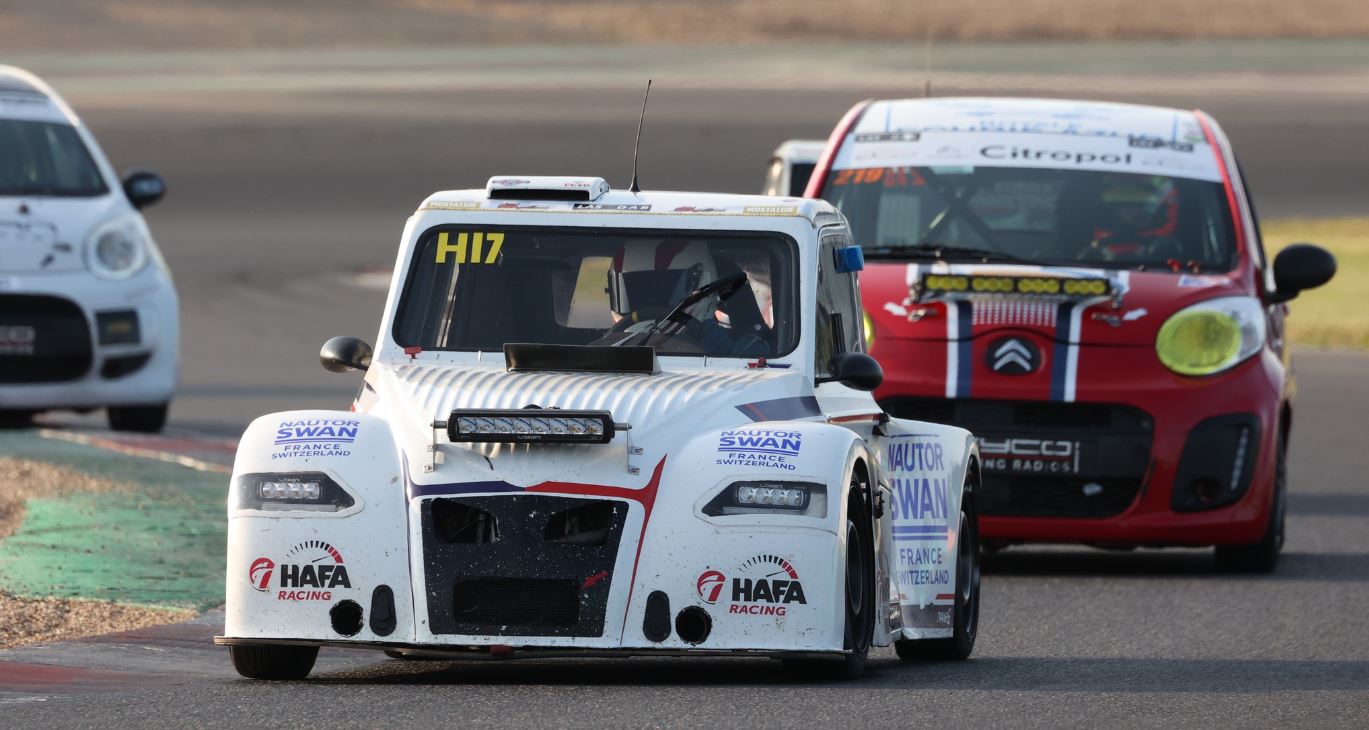Mitjet: brand, cars, championships
By RobinB on 13 May 2025 Circuit / Trackday Circuit / Race Hillclimbing & SlalomMitjet is a French manufacturer of silhouette-type race cars, created in 2006 by driver Jean-Philippe Dayraut.
His goal was to offer affordable and identical competition cars, following the slogan "Racing for everyone". The first Mitjet, the 1300, appeared in 2006. It’s a small rear-wheel-drive car with 150 hp for around 550 kg, designed for low-cost sprint races.
ℹ️ The concept quickly became a success, with over 300 Mitjet cars built in a decade 😎
Given this enthusiasm, the Mitjet 2L was launched in 2012, featuring a more powerful 2.0L engine (around 230 hp). It coexisted for a while with the 1300 before officially replacing it. In 2014, an even more powerful version, the Mitjet Supertourisme, was introduced with a 330 hp V6 engine. This car earned, as early as 2015, the official FFSA French Supertourisme Championship label 🥳
Mitjet also ventured into rally-raid in 2015 with the launch of the Mitjet Offroad, an off-road model powered by a 485 hp V8 engine (the Chevrolet LS3). In its very first year, it was entered in events such as the Rallye du Gers-Armagnac and the Baja Aragón.
A turning point came in 2020: Jean-Philippe Dayraut sold the brand, which was taken over by a duo composed of Christophe Cresp, an entrepreneur and passionate driver, and Stéphane Roux, head of the MV2S Racing team. Together, they renamed the structure Mitjet International and set out to relaunch and professionalize the championships, while expanding their reach internationally. Under their leadership, Mitjet strengthened its presence in Europe (France, Italy, Benelux, and Northern Europe), structured its national series, and launched a new continental competition in 2025: the Mitjet European Cup 🔥
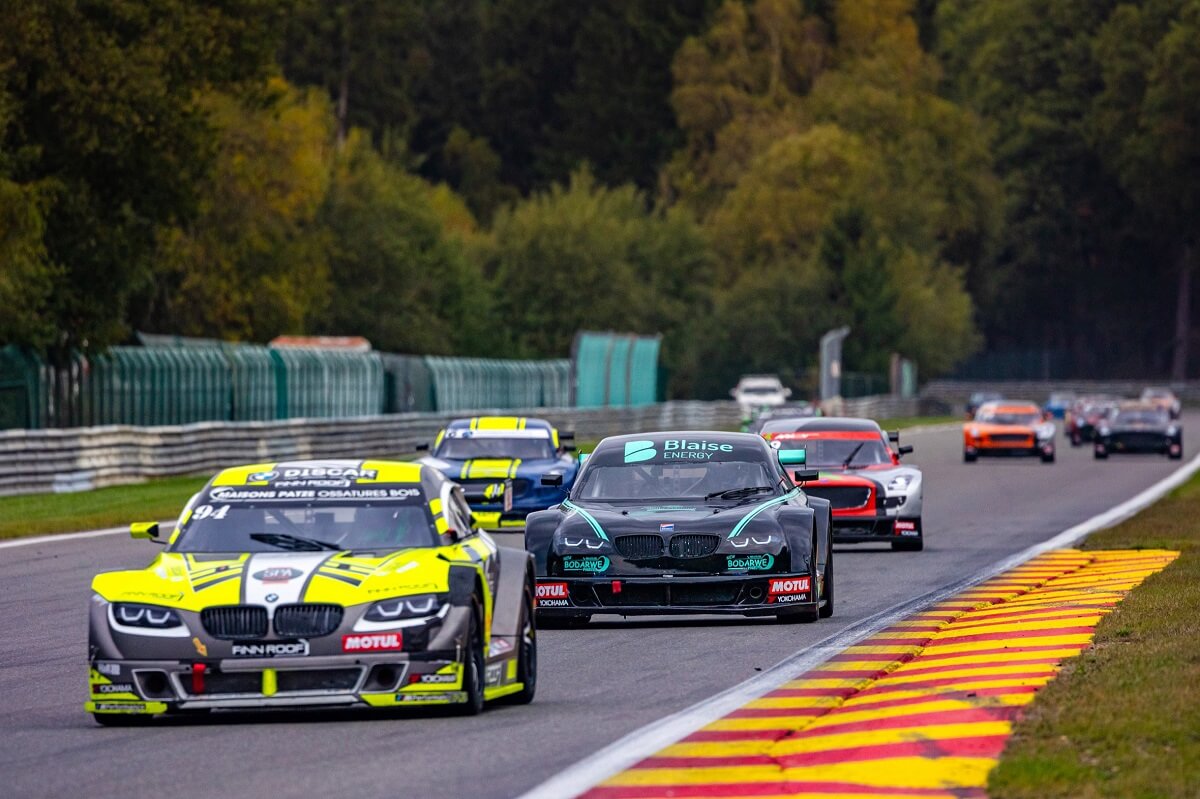
French production and technical expertise
All Mitjet cars are designed and assembled in France by Tork Engineering, a company based in Amilly, in the Loiret region. Founded by Richard Tur, Tork has been behind all Mitjet models since 2006. In 2012, the company joined the Poclain Hydraulics group, becoming Poclain Véhicules, while continuing its motorsport activities.
In 2017, Tork Engineering was acquired by Onroak Automotive, the manufacturing arm of the Everspeed Group, led by Jacques Nicolet, to strengthen its offering of lightweight and off-road competition vehicles. Two years later, in 2019, Onroak was renamed Ligier Automotive, and Tork was integrated into this structure, while maintaining its specific activities.
Even today, Mitjet cars are produced in Amilly by Tork’s historic teams, in specialized workshops covering tube welding, machining, mechanics, electronics, and painting. This site is also responsible for assembling the Ligier JS2R, another tubular-frame race car from the group, as well as producing concept cars for various manufacturers. A 100% French production, serving a concept designed for accessible racing 👌
The Different Models Built by Mitjet
Over the years, Mitjet has developed its concept into several successive models. Despite differences in performance and engine displacement, these versions share a common philosophy: lightweight tubular chassis, reliable mechanics, and a complete absence of electronic aids, in order to emphasize driving skills and reduce costs. The bodywork can be customized (see below), while retaining the same technical foundation. Here’s a technical sheet for each emblematic model that has been produced.
Mitjet 1300 (2006 – 2013)
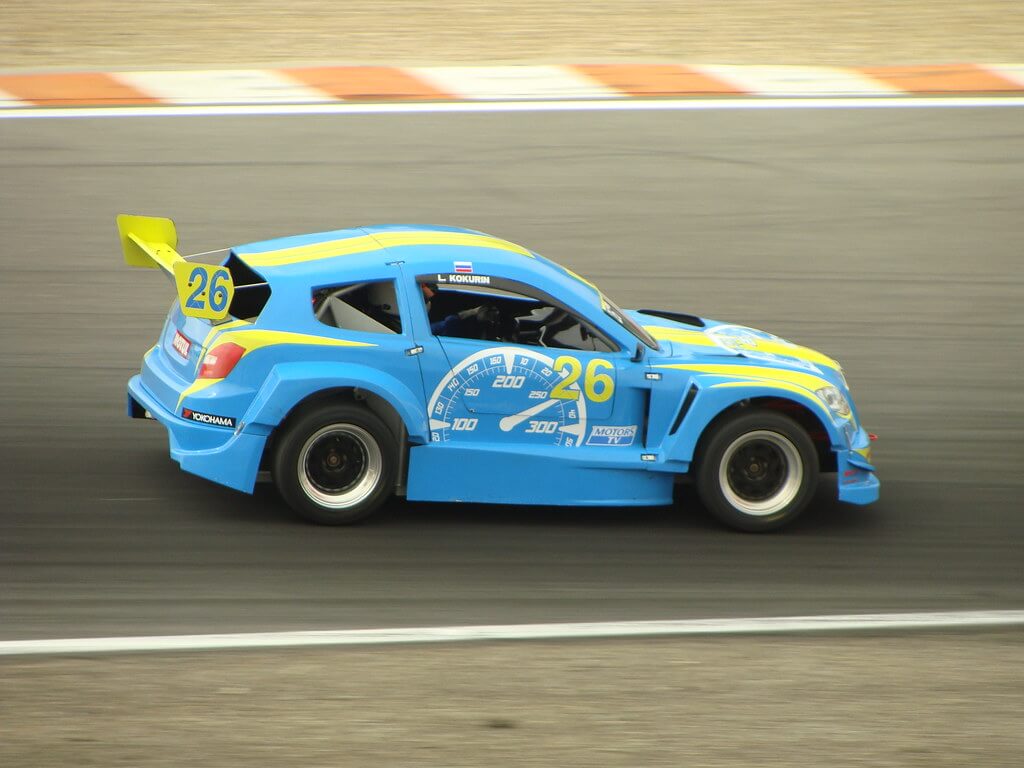
- Engine: Yamaha XJR 1300 cc inline 4-cylinder (motorcycle engine)
- Power: ≈ 150 horsepower (at 10,000 rpm)
- Gearbox: 5-speed sequential
- Drivetrain: Rear-wheel drive
- Weight: 550 kg dry
- Top speed: ~200 km/h
- Chassis: Steel tubular frame with integrated roll cage (FFSA homologation)
- Bodywork: Fiberglass/polyester, two-seater silhouette style
- Dimensions: Length: 3.70 m, Width: 1.60 m, Height: 1.40 m
- Tires: Road-approved 195/60/15. The Trophée Tourisme Endurance uses Goodyear EfficientGrip Performance 2 in 195/60 R15 88V
This first Mitjet, agile and lively, offered an excellent power-to-weight ratio and very low running costs for a race car. Although it was replaced in 2014 in official championships, the Mitjet 1300 still competes today, notably within the Trophée Mitjet 1300 as part of the Trophée Tourisme Endurance (TTE), or in hillclimb events, where it is classified in GTTS/1. Its accessibility makes it a popular choice for racing schools: used models can be found for around €20,000 race-ready. As the car is rare and sought after, it holds its value very well!
➡️ See all Mitjet listings on GoToTheGrid 😋
Mitjet 2L (since 2012)
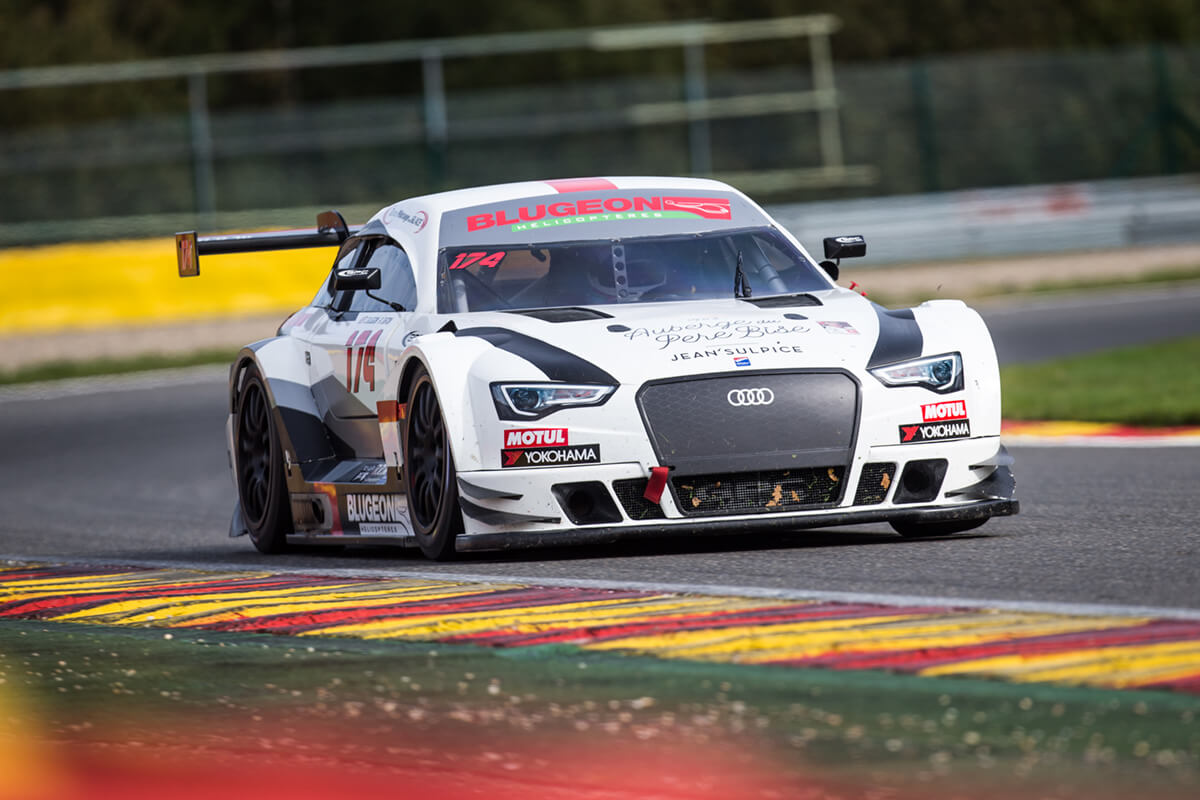
- Engine: 2.0L inline 4-cylinder 16-valve (Renault RS origin)
- Power: ≈ 220 horsepower at 7200 rpm
- Gearbox: 6-speed sequential (SADEV gearbox)
- Drivetrain: Rear-wheel drive (rigid axle)
- Weight: 760 kg dry
- Top speed: ~220 km/h
- Chassis: FIA-homologated tubular steel, double wishbone suspension
- Bodywork: Fiberglass, two-seater silhouette type
- Dimensions: Length: 4.10 m, Width: 1.80 m, Height: 1.30 m
- Tires: Yokohama 255/45/18
Designed to offer more power while remaining accessible, the Mitjet 2L marked a new milestone in the brand’s development. Heavier than the 1300 but also more performant, it retains the core principles of the concept: pure driving, robust mechanics, and no electronic assists (no ABS, no traction control) 💪
Its 2-liter engine from Renault Sport is known for its reliability and manageable maintenance costs. The 6-speed SADEV sequential gearbox allows fast and efficient shifts, very similar to the feel of a lightweight prototype. With 220 hp for only 760 kg, the Mitjet 2L offers a highly educational power-to-weight ratio while remaining accessible.
Introduced in 2012, it quickly became the benchmark model for Mitjet championships, both in France and abroad. Still in production today, it forms the technical foundation of the official series. Its new price is around €60,000 excluding VAT, while used race-ready models can be found between €30,000 and €50,000 including VAT, depending on equipment and condition.
Mitjet Supertourisme V6 (ST) (2014 – 2019)

- Engine: 3.5L naturally aspirated V6 (Nissan VQ35 type)
- Power: ≈ 330 horsepower
- Gearbox: 6-speed sequential (SADEV) with paddle shifters
- Weight: ~830 kg dry
- Top speed: ~240 km/h
- Chassis: Tubular steel frame, Öhlins racing suspension, Brembo 4-piston brakes
- Bodywork: Fiberglass, "GT"-style silhouette (advanced aerodynamic elements)
- Dimensions: Length: 4.30 m, Width: 1.82 m, Height: 1.21 m
- Tires: Yokohama 285/65/18
The Supertourisme V6 remains the most powerful Mitjet ever produced for the track. It features a 3.5-liter naturally aspirated V6 (derived from the Nissan VQ35), delivering 330 horsepower with a sound close to that of GT cars. Despite increased performance, it maintains the Mitjet DNA: low weight, simple and efficient chassis, and no electronic driver aids 🔥
Homologated in 2015 by the FFSA as the French Supertourisme Championship, it helped Mitjet step up in terms of image and performance. Less widespread than the 2L due to its higher cost, it is still used occasionally, particularly in hillclimbs or at specific events. On the used market, race-ready examples go for around €50,000 to €60,000 including VAT, depending on configuration.
The Mitjet Offroad: A Foray into Rally-Raid

Often unknown to the general public, the Mitjet Offroad was one of the brand’s most ambitious and atypical projects 😲
Unveiled in 2015, this off-road version retains the Mitjet DNA: common technical base, controlled costs, and a focus on driving pleasure above all. Unlike other models, it leaves the tarmac to tackle rally-raid tracks.
Under its buggy-like design, the Mitjet Offroad features a reinforced tubular chassis, high ground clearance, and a widened frame. It is powered by a Chevrolet LS3 V8 producing up to 485 horsepower in unrestricted form, or around 360 horsepower with the FIA restrictor.
Built to handle jumps, bumps, and landings during full-speed stages, it was entered in its very first year in the Gers-Armagnac cross-country rally, then at the Baja Aragón, alongside much more expensive vehicles 💸
ℹ️ While the project didn’t enjoy the same longevity as the circuit versions, the Mitjet Offroad still proves that the brand’s “low-cost racing” concept can, at least technically, be applied to the most extreme terrains.
Customizable Bodywork: A Shared Technical Platform
One of the core principles of the Mitjet concept lies in the customization of bodywork. All cars of the same model share an identical base: chassis, engine, suspension, and tires are strictly the same, ensuring complete mechanical equality. Only the fiberglass bodywork can be modified to adopt different appearances 🧑🎨
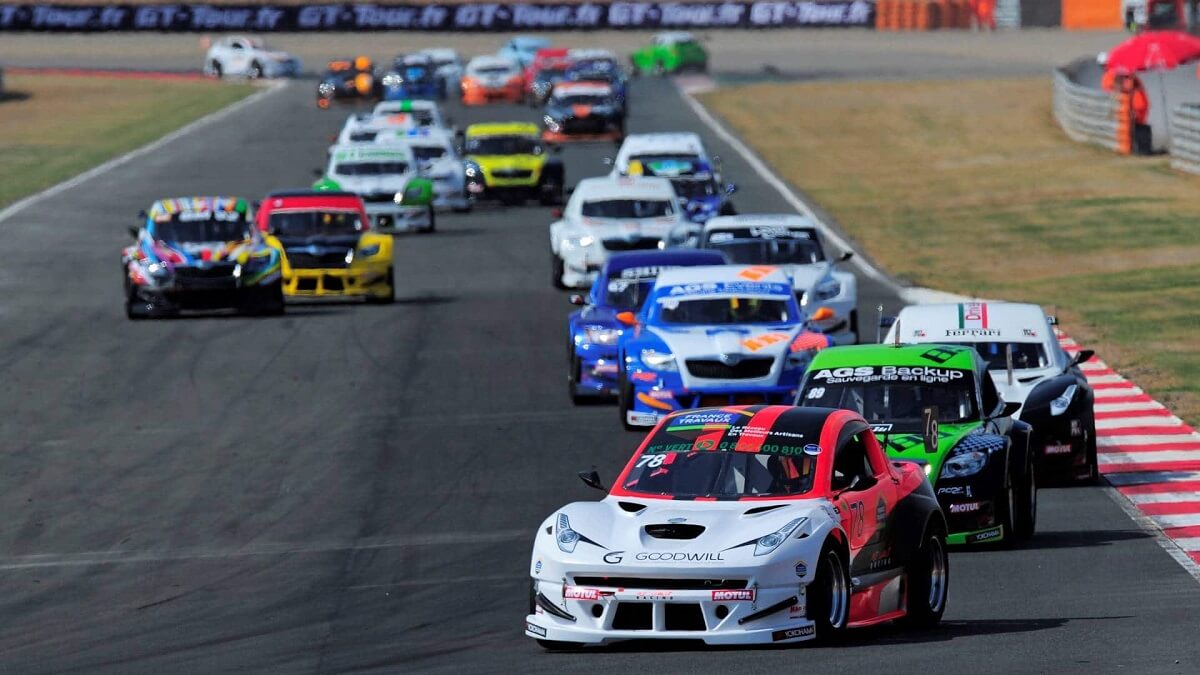
Thus, a Mitjet 2L can feature a front end inspired by a BMW, Audi, Citroën, or Mercedes sedan, depending on team preferences. These variations are purely aesthetic: the overall dimensions and aerodynamics remain equivalent, so no one gains an advantage. Body parts (hoods, fenders, bumpers) are also interchangeable, which simplifies repairs while allowing each team to stand out visually 👍
This freedom of design enhances the on-track spectacle, as spectators can quickly identify the cars by their look, without compromising sporting fairness. In short, the technical platform is shared by all competitors, and only the driver’s performance makes the difference, in line with the Mitjet spirit.
Also see: "Legend Car: the Affordable, Ultra-Fun Hot Rod Racer"
Current Mitjet Championships and How They Work
Since its creation, Mitjet has developed several one-make championships across Europe, now organized under the banner of Mitjet International. The concept remains unchanged: all competing cars are technically identical, with only a few setup options left open (geometry, anti-roll bars, tire pressures, etc.). This approach highlights driver talent and promotes friendliness rather than a race for technology.
Mitjet championships are open to a wide range of drivers, whether young hopefuls, seasoned amateurs, or gentleman drivers. Typically, three specific classifications coexist: the Junior category, reserved for drivers under 25, the Gentlemen class for experienced amateurs, and a Senior class for drivers over 40. This structure encourages close racing between competitors of similar profiles while maintaining a single grid. This “racing for everyone” philosophy has been a key contributor to the success and longevity of the formula for nearly 20 years 👏
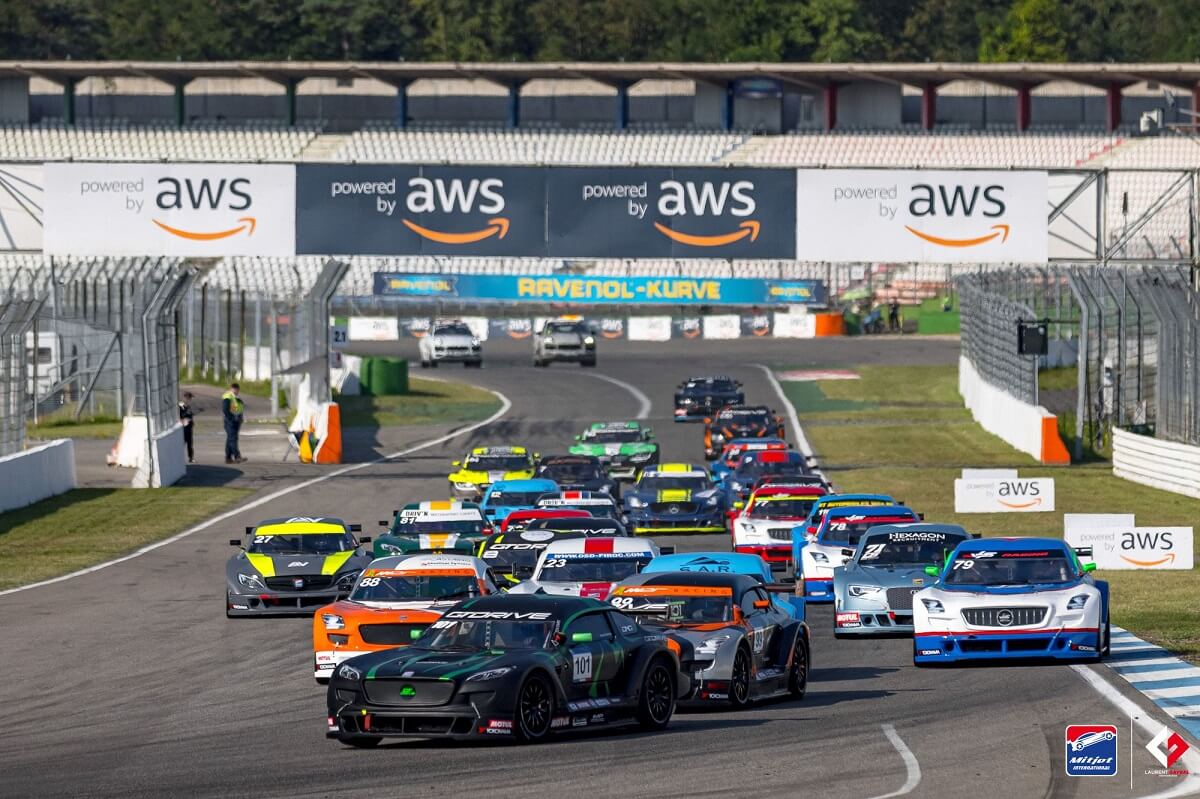
Race Format
Mitjet events are usually held over weekends featuring four sprint races. A typical meeting for the Mitjet 2L or 1300 Trophy includes free practice, two qualifying sessions, and four races of about 20 minutes each, all with rolling starts. It is possible for two drivers to share the same car over the weekend to reduce costs. In that case, each driver takes part in one free practice, one qualifying session, and two races 😉
There are no refueling or driver changes in these sprint races. However, some championships have also offered endurance events, such as 4-hour races in the Mitjet 2L Endurance format. Maintenance and logistics are simplified thanks to a single tire supplier and a service package provided to the teams.
Relatively Accessible Budgets for Motorsport
The budget for a full season in Mitjet is relatively affordable compared to other disciplines. Expect around €3,500 excl. VAT per weekend in Mitjet 1300 and €14,000 excl. VAT in Mitjet 2L for one of the official sprint championships. As mentioned earlier, it's possible to share the car to cut costs.
This accessibility attracts many seasoned amateurs, young talents looking for experience, and even experienced drivers seeking fun at a lower cost.
Also read: "Nova Proto NP02: The Perfect Balance Between Budget and Performance"
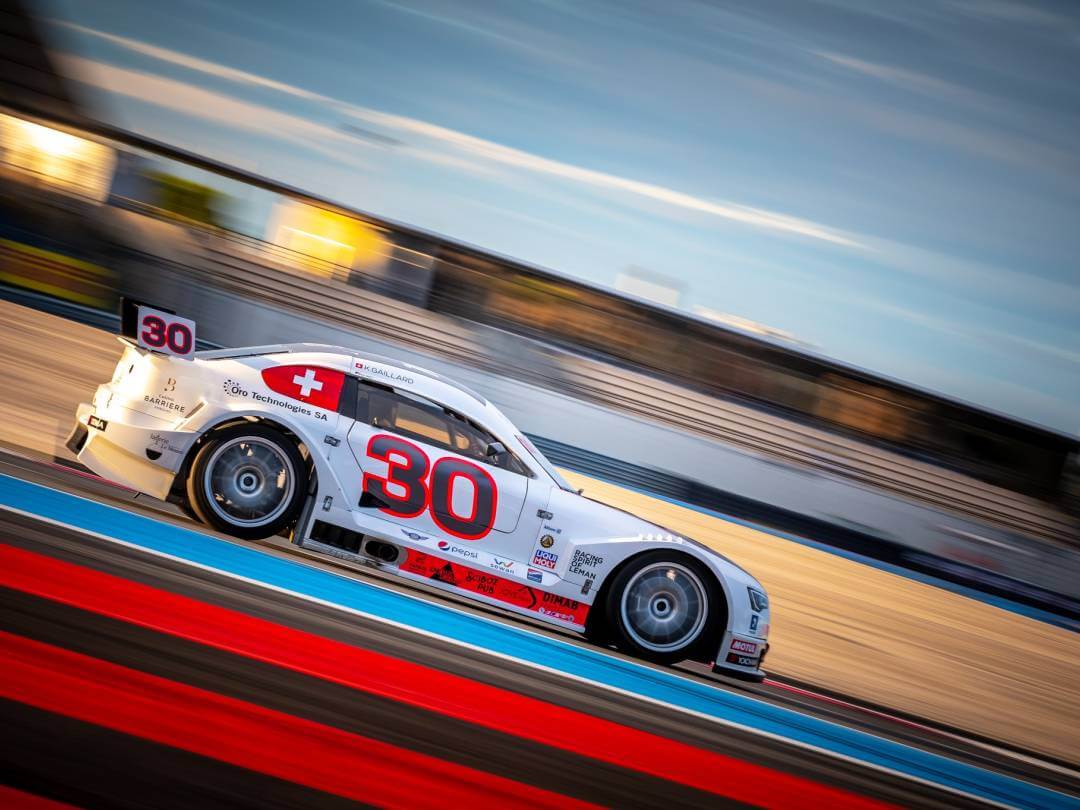
Main Championships in 2025
Under the umbrella of Mitjet International, the 2025 season is structured around three major circuit competitions: the Mitjet 2L France Trophy, the Mitjet 2L Italy Trophy, and the Mitjet European Cup.
The Mitjet 2L France Trophy is the official national championship in France, listed on the FFSA calendar. The Mitjet 2L Italy Trophy, meanwhile, is organized in partnership with Mitjet Italia and local promoter B&P Eventi, with support from Mitjet International. It is a standalone championship held on major Italian circuits.
The Mitjet European Cup, launched in 2025, includes shared rounds between the French and Italian trophies, with races in France, Belgium, Italy, and Spain. Some rounds therefore count for two championships at once, which helps bring together a larger, more international grid (e.g., Spa-Francorchamps or Motorland Aragón).
Until 2024, separate championships existed in Italy (Mitjet 2L Italia Trophy) and Northern Europe (Mitjet Northern Europe Trophy), but the current trend aims to consolidate these efforts into a more readable continental format 🌍
Finally, the Mitjet 1300 continues its career in a dedicated championship within the Trophée Tourisme Endurance (TTE). This trophy remains active only in France, with a similar sprint format true to the original 1300 spirit.
Internationally, Mitjet series also emerged in the late 2010s in Russia, the United States, and Northern Europe, showcasing the reach of a unique concept in the motorsport world 🤩
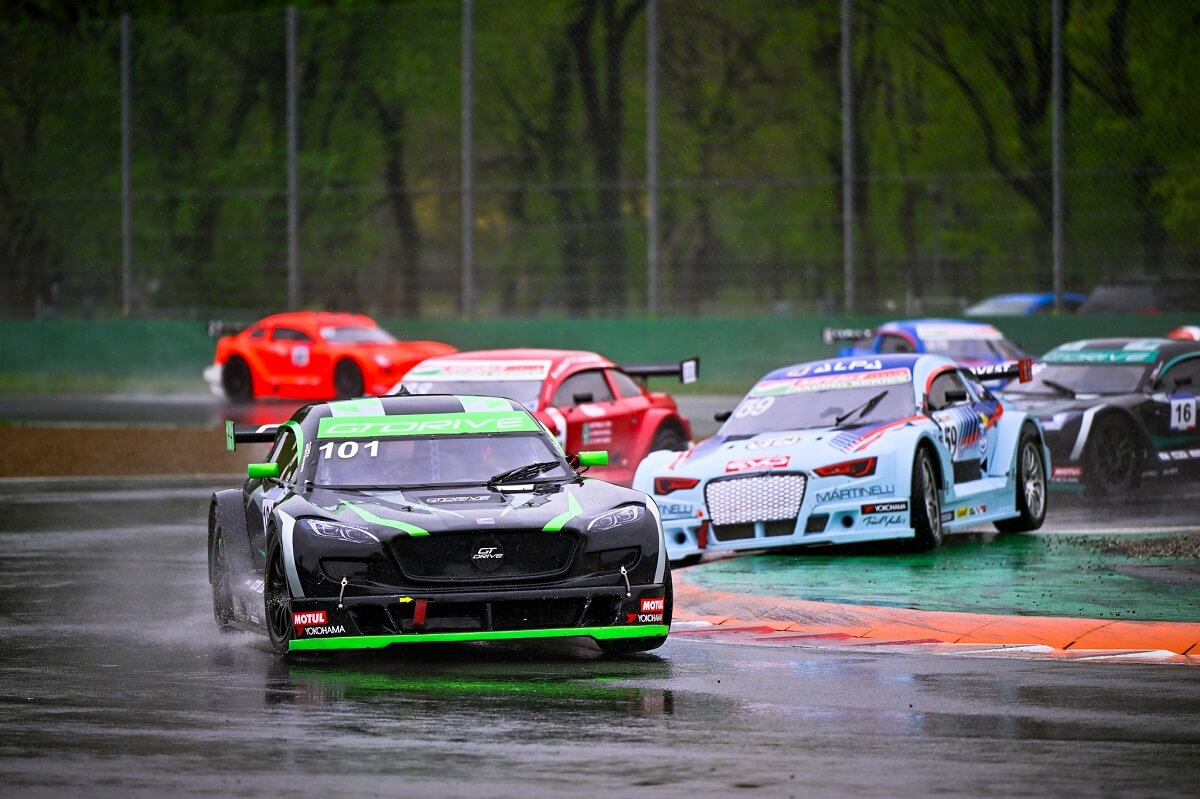
2025 Calendar – Mitjet 2L France Trophy
The Mitjet 2L French Championship will be held across 5 meetings in 2025:
- March 28–30: Circuit Paul Ricard (France)
- May 09–11: Circuit Dijon-Prenois (France)
- June 20–22: Circuit de Spa-Francorchamps (Belgium)
- September 05–07: Circuit Motorland Aragón (Spain)
- October 10–12: Circuit de Nevers Magny-Cours (France)
ℹ️ Note: Spa and Aragón are joint rounds with the European Cup, see below 👇
2025 Calendar – Mitjet 2L Italy Trophy
The Mitjet 2L Italian Championship, organized by Mitjet Italia in partnership with B&P Eventi and Mitjet International, will feature 5 major meetings in 2025:
- April 11–13: Monza Circuit (Italy)
- June 06–08: Vallelunga Circuit (Italy)
- July 04–06: Imola Circuit (Italy)
- September 12–14: Mugello Circuit (Italy)
- October 10–12: Misano Circuit (Italy)
Also worth noting is the return of the Mitjet Club Series, a reduced and more accessible format, designed for beginner or amateur drivers wishing to discover the discipline in a simpler and friendlier setting. Three circuits will host this side series in 2025:
- March 15–16: Magione
- May 17–18: Misano
- July 19–20: Vallelunga
This dual setup strengthens Mitjet’s presence in Italy, offering both a high-level championship and a smoother entry point into competition 👍
2025 Calendar – Mitjet European Cup (Mitjet International)
The new 2025 Mitjet European Cup will feature 7 rounds, most of which are shared events with the national French and Italian trophies:
- March 28–30: Circuit Paul Ricard (France) – with France Trophy
- April 11–13: Monza Circuit (Italy) – with Italy Trophy
- May 09–11: Dijon Prenois Circuit (France) – with France Trophy
- June 20–22: Spa-Francorchamps Circuit (Belgium) – with France Trophy
- July 04–06: Imola Circuit (Italy) – with Italy Trophy
- September 05–07: Motorland Aragón Circuit (Spain) – with France Trophy
- October 10–12: Magny-Cours Circuit (France) – with France Trophy
ℹ️ This European calendar allows drivers from different countries to compete at joint events while earning points for their respective national championships. At the end of the season, a separate ranking crowns the best performer across these international meetings.
🏆 2024 Mitjet Championship Results
Mitjet 2L France 2024
- Overall classification: Romain Damiani (GTDRIVE Racing Team)
- Junior: August Therbo (MV2S Racing)
- Gentlemen: Sébastien Seveau (Génération Stunt)
- Seniors: Yvan Dupuis (MV2S Racing)
Mitjet 2L Italy 2024
- Overall classification: Gabriele Torelli (Cram Motorsport)
- Junior: Giuseppe Forenzi
- Gentlemen: Davide Gaggianesi
- Seniors: Mikhail Makarovski
Mitjet Northern Europe 2024
- Overall classification: Romain Damiani (GTDRIVE Racing Team)
- Junior: August Therbo (MV2S Racing)
- Gentlemen: Xavier Bourlard (GTDRIVE Racing Team)
Mitjet 1300 Trophy (TTE)
Patrick Saves (JLM SPORT) claimed the title in Mitjet 1300, while Guillaume Faye (EVO SPRINT) and Antoine Délomez (EVO SPRINT) completed the podium. In Mitjet Evo, Bruno CHAUDET (TM EVOLUTION) took the title.
Conclusion
Mitjet has successfully established a clear and consistent vision of motorsport: pure driving, without gimmicks, at a controlled cost. By refocusing efforts on the 2L, its flagship model, the brand has built a clear, educational, and sustainable offering. The organization of championships in France, Italy, and at the European level starting in 2025 strengthens this momentum, with well-structured events and real clarity for both drivers and teams 💪
The Mitjet Supertourisme remains a technical showcase occasionally used, while more niche projects like the Offroad didn’t achieve the same success. But it is precisely this ability to refocus on the essentials that allows Mitjet International to continue attracting a new generation of drivers in search of performance, mechanical equality, and genuine sensations.
More than just a brand, Mitjet is now a full-fledged format in the European motorsport landscape.

